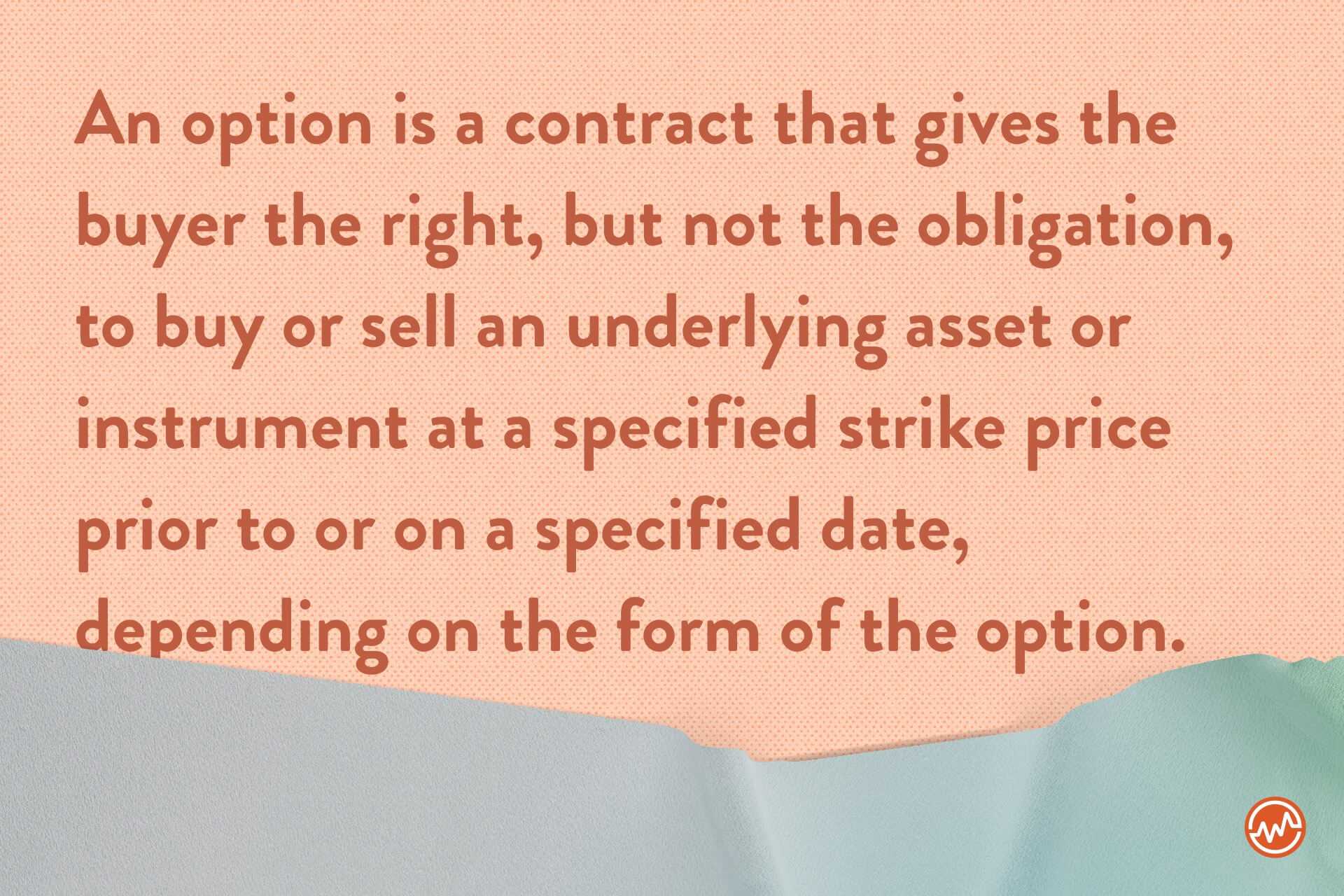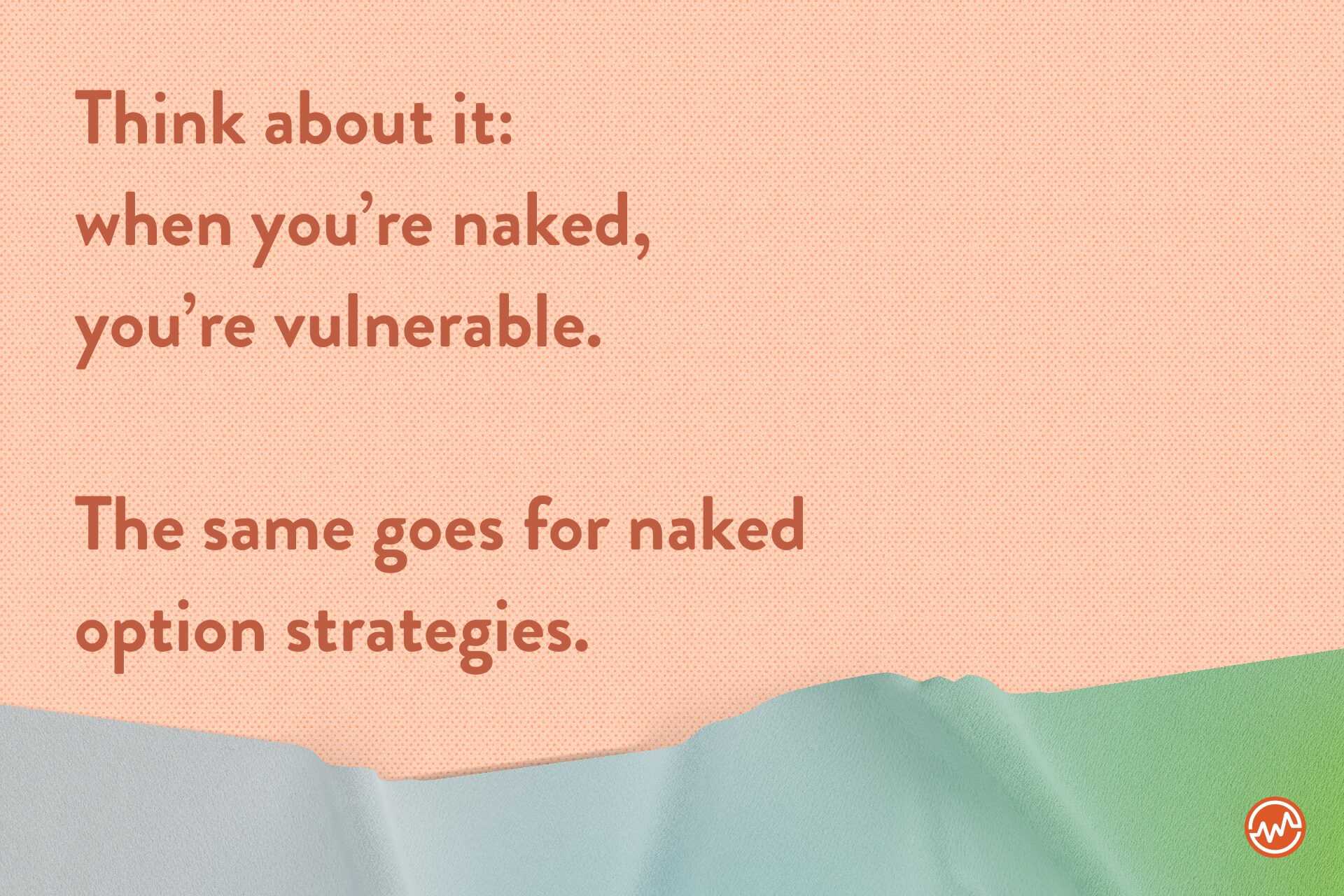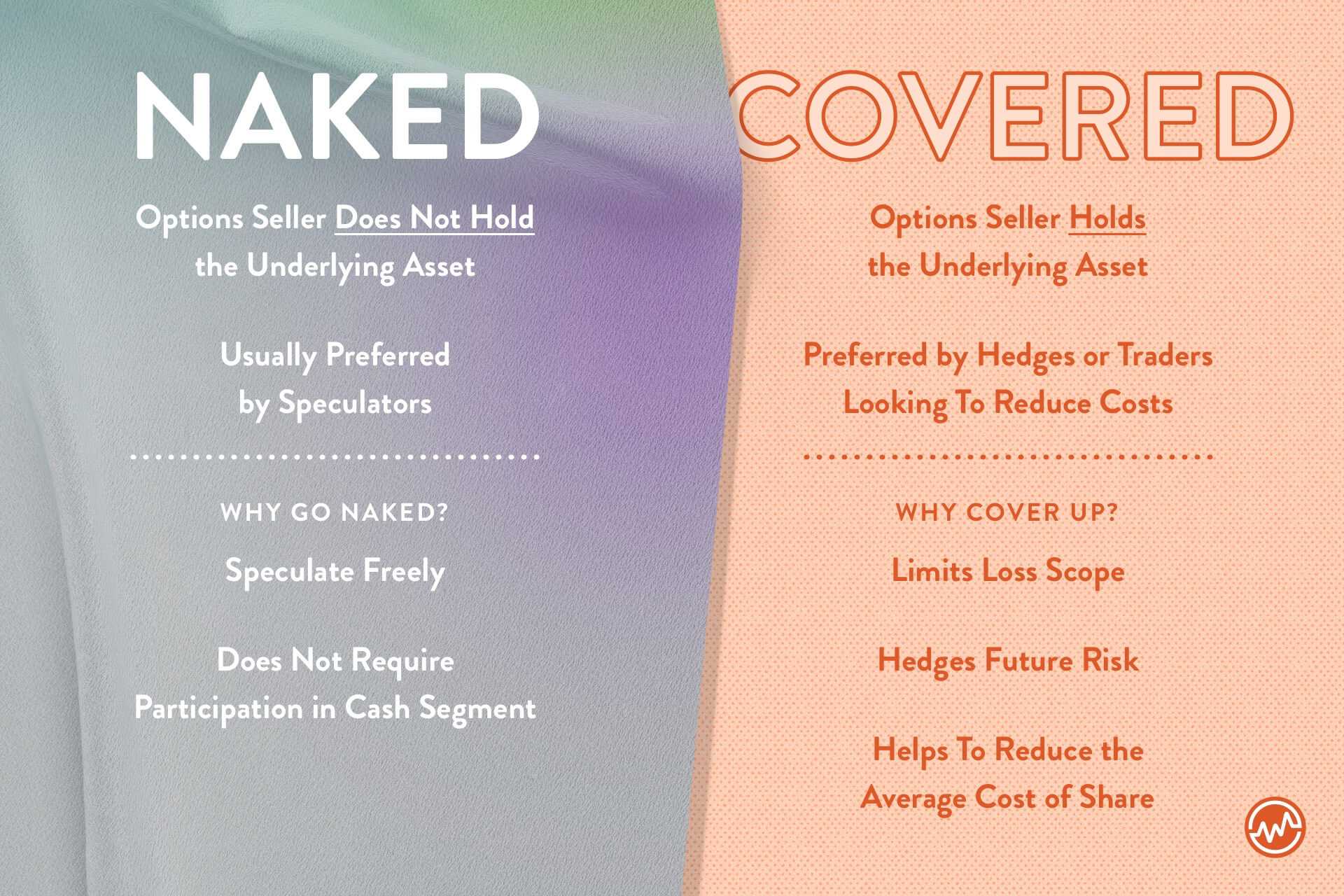Calls, puts, naked, covered…While the world of options can have confusing terminology, if you learn it, it can be a rewarding way to generate income. In this article, we’re going to break down the difference between covered and naked options so that you can make wise investment decisions in today’s market and in the future.
Before we explain the difference between covered and naked options, let’s first explore the options trading basics.
Options Trading Basics
What Is An Option?

An option is a contract that gives the buyer the right, but not the obligation, to buy or sell an underlying asset or instrument at a specified strike price prior to or on a specified date, depending on the form of the option.
Calls vs Puts
There are two types of options: calls and puts.
- A call is an option that offers the right but not the obligation to buy an underlying asset at a certain date for a predetermined price.
- A put is an option that offers the right but not the obligation to sell an underlying asset at a certain date for a predetermined price.
If you’re new to the world of options, or you have further questions about the terminology, you may want to learn more of the basics or refresh your memory before you proceed.
Here are a few free resources to do just that:
Covered Vs Naked Options
Some options trading strategies utilize only options with nothing to back them while others combine your stock positions with options.
Finding the strategy that best fits your needs comes down to risk-versus-reward and whether you want to be “naked” or “covered.” We’ll look at each in-depth next.
What Is A Naked Option?
When you own naked options, you hold an option without holding the underlying security (such as the stock the option is for).
Without the underlying security, you can’t exercise the option — but that doesn’t mean you can’t use it to make a profit. You can still sell the option for a premium.
For example, if you sell a put option without owning the underlying stock, you have what’s called a naked put position.
There are naked option sellers and naked option buyers.
Whether you choose to buy or sell naked options depends on the amount of risk you’re willing to undertake.
Advantages of Naked Options
There are several perks of using a naked options trading strategy. Perhaps the biggest perk is that your upfront costs are lower than they would be if you were to use a covered strategy.
You are only responsible for the margin needed to sell a put or a call, not the funding needed to own the underlying shares.
Risks of Naked Options

Think about it: when you’re naked, you’re vulnerable. The same goes for naked option strategies.
When you sell naked options, you face directional market risk. That means if you bet the market will move in one direction and it moves in the opposite direction instead, you’re primed to take a loss.
If you sell a naked put and the price of the underlying stock tumbles, you are obligated to buy the shares at the strike price.
This risk is buffered if you plan on purchasing the underlying stock regardless. If you don’t plan on buying the stock, a naked options strategy is a real risk.
With a naked call, the buyer has a right to stock the seller doesn’t have. This means that if the stock market climbs above and beyond the strike price, the seller must buy the stocks on the open market and sell them to the buyer at the strike price.
If you sell a naked call, you are exposed to “unlimited risk” as the stock price of any company can theoretically climb to infinity or drop down to zero.
Warren Buffet Uses Options Income Strategies

Warren Buffett made huge returns in the wake of the 2008 financial crisis. Where everyone else saw disaster, he saw an opportunity to generate wealth.
How did he do it?
Buffett used naked options income strategies. He sold overvalued options and collected robust premiums for the right to buy the stocks he wanted at a price he was willing to pay for.
Buffet looks for stock prices to go down because it gives him the opportunity to buy more stock.
This makes a naked put income strategy very attractive if you want to own the underlying stock for the options you’re selling.
Here’s how it works:
- Determine in advance what price will allow you to buy the stock at an attractive valuation.
- Sell a put at that strike price and collect the premium.
- If the price of the stock gets to your target purchase level, purchase the shares. If the price of the stock rises and never gets to your target level, take the option premiums.
Let’s say you’d like to purchase XYZ stock at $50, but the market price is currently $53. You can sell a premium on a 1-year naked put option of $2.50.
This makes your effective entry price $47.50 ($50 strike price minus $2.50 premium).
If the market value of the stock does not drop below $50, you collect the premium.
If it does, you get to buy the stock at the price you wanted to purchase it for in the first place.
What Is A Covered Option?
An alternative to selling naked options is selling covered options.
Selling covered calls is a more popular strategy than selling covered puts. That’s because, with a covered call, investors are more likely to own the underlying security.
When you sell a covered call, you are generating income whether the price:
- moves up
- moves down
- moves sideways
By using a covered call strategy, you are paid while you own the stock, and can enhance your income if the stock is a dividend producing company.
When you sell a covered put, you combine your stock positions with options. This allows you to create wealth and buffer your risks.
Advantages of Covered Options
There are several benefits to receiving income from options when you own the underlying security.
A covered call provides protection against a decrease in the value of your shares.
If you receive $2.50 in premiums, you have that dollar figure as protection if the price of the stock falls.
That means the stock you purchased at $50 can fall to $47.50 and you would still break even.
A covered call strategy also allows you to forecast income returns. The premiums that you receive are consistent and stable, allowing you to predict your budgeted income goals.
Essentially, you’re being paid to wait until the stocks you own climb.
Risks of Covered Options
When you own shares with covered calls, your main risk is directional market risk.
If prices of the stocks you own tumble, the value of your shares will decline at a faster rate than the value of your calls.
The value the stock loses could be more than the income you receive from the options you sold — but you would have lost that value anyway if you were holding the stock.
The payoff of a covered call presents a second risk: your shares are called away. The benefit of receiving premium is overset with a fixed take profit level. If you set your strike price of the covered call at your take profit level for the shares that you own, you have predefined your risk management.
You should also set a stop loss level (directions to a broker to sell the stock if the value dives too much) for the shares, prior to buying your shares.
How Can You Use Covered Options In Tandem With Your Stocks?
Adding covered calls to your stock portfolio changes some of the dynamics, mainely that your risk profile will change.
If you are considering adding income, or have a dividend income strategy already in place, then adding covered calls will enhance your returns.
You will experience more protection against an adverse move in the share price of the stocks you own, but it comes at a price. You give up some of your profit if stock prices surge higher.
For those who are purely looking for capital gains, you can enhance your gains by picking out your take profit (the price at which you cash out) and receiving additional income if the price rises to that level.
What’s Best For You: Covered or Naked?

Whether you are covered or naked, selling options can provide you with robust income opportunities. While the risk profiles between naked and covered positions are different, each can provide you with specific benefits.
The upfront costs of selling naked puts may be more attractive than owning a covered position, but you would forgo the additional dividend income you might experience when owning a covered call position.
Both strategies fit into an income producing portfolio. This gives you an opportunity to create a risk profile that performs well in a market that moves up, down, and sideways.
Continued Learning: Stock Investing
Now that you have a better understanding of covered vs naked options and which strategy may work best for you, increase your investing toolkit with these free resources so that you can be wise and profitable investing decisions:












